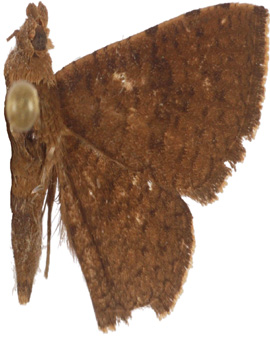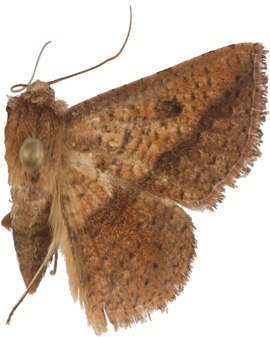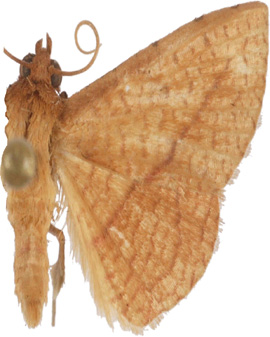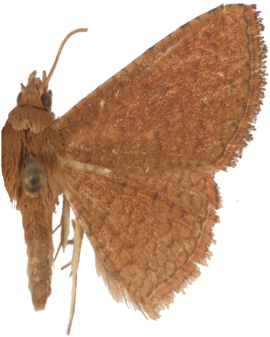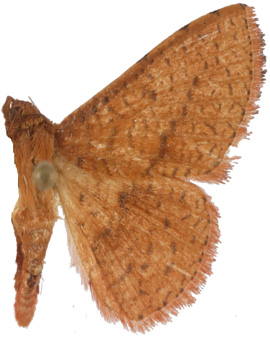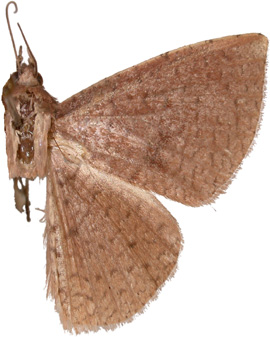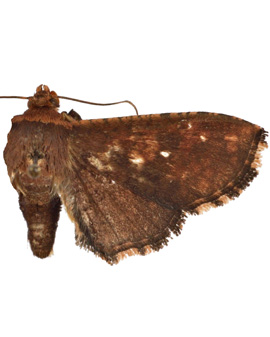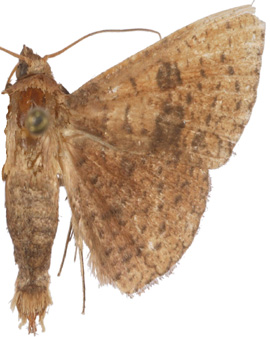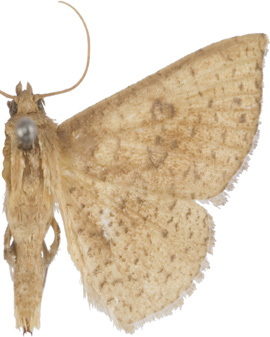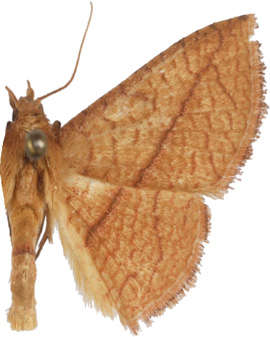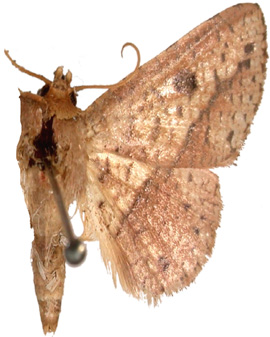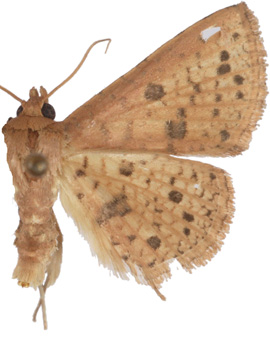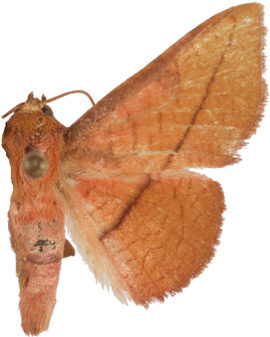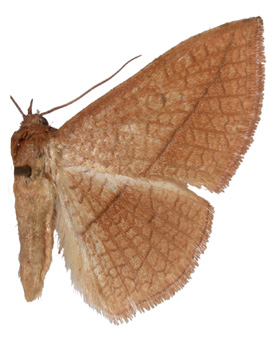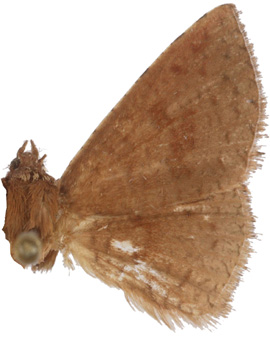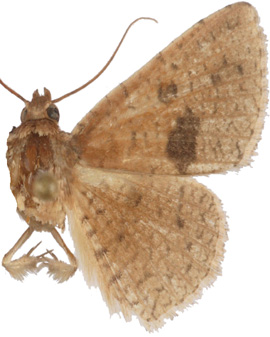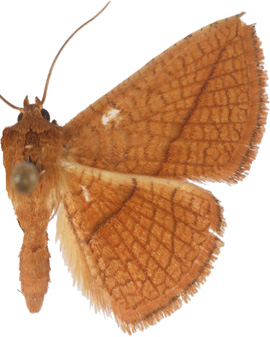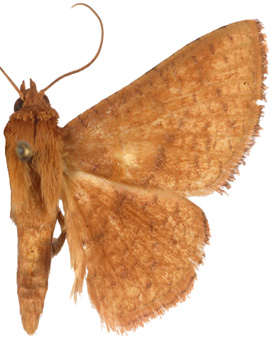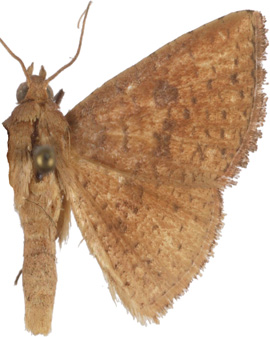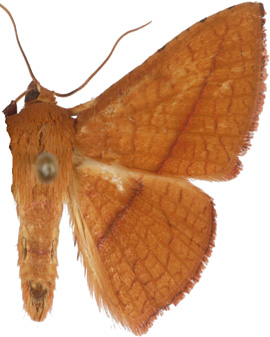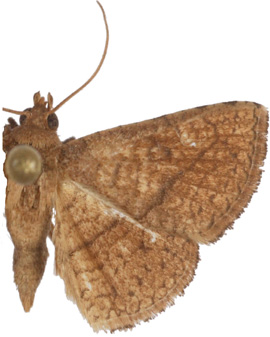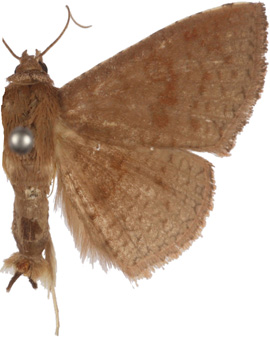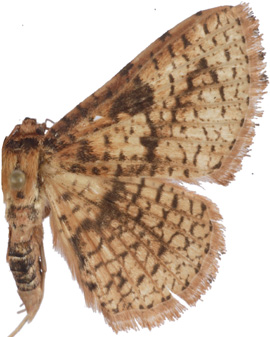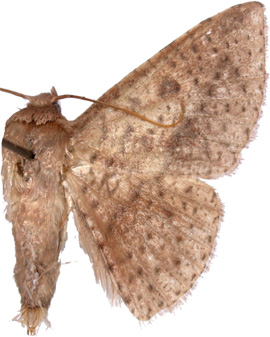Scientific classification
Animalia > Arthropoda > Insecta > Lepidoptera > Ditrysia > Thyridoidea > Thyrididae > Striglininae > Striglina
Genus Striglina Guenee, 1877 (sensu Whalley, 1976:34)
Type species: lineola Guenée, (1877: 283) (by subsequent designation, Whalley, 1964;1973). The type species, from Bengal, is a junior subjective syn. of S. scitaria Walker, 1862 (Pagenstecher, 1892: 42).
Syn. Daristane Walker (1859a :193) suppr. in favour of Striglina (Whalley 1976: 34). Available as a subgeneric name.
Syn. Plagiosella Hampson, (1897: 625). Type species clathrata. Syn.. n. Whalley (1967: 42).
Syn. Plagiosellalula Strand, ([1913] 1912: 62). Type species strigifera. Junior subjective syn. Syn. n. Gaede (1917b: 372).
Syn. Pycnopera Warren, (1898: 7). Type species crassisquama. Syn. n. Shaffer & Nielsen (1996).
Generic description: The eyes are with or without interfacetal hairs. A proboscis is present. Labial palpi are three segmented. The fore tibia has an epiphysis, the hind tibia has two pairs of spurs and the tarsi with either an apical pair or rows of spines on each segment. HW with Sc+R1 and Rs free or joined for part of its length. The genitalia of the genus are morphologically very distinct from other thyridid genera. The uncus is usually modified and the valves reduced or modified. Gnathos with peg-like teeth. A signum is usually present. The ostium is often highly sclerotized (Whalley, 1971a:64-66).
Striglina is a widespread pantropical genus. It has over 55 species (RTS:126). Most species are small to medium sized, yellowish or reddish-brown with a reticulate or speckled patterning, often with a diagonal line across the FW and continuing onto the HW. The shape and exact course of these lines can be a indication of species. A few spp. have large variation with several named sspp. Many species are pests of cultivated plants. See Whalley (1976:35-37) for a key to males.
Notes on some Striglina spp.
Striglina cuticula Whalley, 1976, S. mediofascia Swinhoe, 1906 and S. rufescens Gaede, 1922 are extremely similar reddish brown species with a speckling of small dark spots. It difficult to separate them visually. S. mediofascia is the easiest, having a more a distinct dark blotch near the inner edge of the FW and a coarser reticulated patterning especially on the HW where there is also a line of dark submarginal dots. S. rufescens has the least distinctive markings. These spp. are best separated by genitalic examination.
Striglina buergersi Gaede, 1922, S. cinnamomea Rothchild, 1915, S. irresecta Whalley, 1976, S. propatula Whalley, 1974a, & S. scitaria (Walker, 1862) are very similar. All except S. irresecta and S. cinnamomea Rothchild are less than 30mm wingspan. Specimens of S. buergersi can be the smallest of all, <18mm. S. irresecta Whalley, 1976 is larger with <36 mm wingspan. S. scitaria has darker orange-brown wings and a reddish-purple diffusion along the transverse line. In S. propatula the shape of the HW post median line differs. It loops back towards the inner margin but it is often indistinct. S. buergersi and S. scitaria have similar shaped HW post median lines which curve across the postmedian area towards the tornus. In S. buergersi it is usually indistinct whereas in S. scitaria all lines are usually distinct. The males of the ‘tibiaria' group (Whalley, 1976:53); (Striglina castaneata Hampson, 1914, S. propatula Whalley, 1964a 1976, S. conjuncta Swinhoe, 1906 and S. tibiaria (Walker, 1859)) are remarkable in having a long hair pencil on the inner margin of the HW which may either inserted in a sac (S. castaneata) or a special groove on the abdomen. The female HW has a normal fringe (Whalley 1974a: 122). Whalley (1976: 57) comments that it is possible that the male genitalia of Striglina spp. are highly modified specifically and do not produce such good generic characteristics as in other genera.
All these spp. are best confirmed by genitalic examination.

